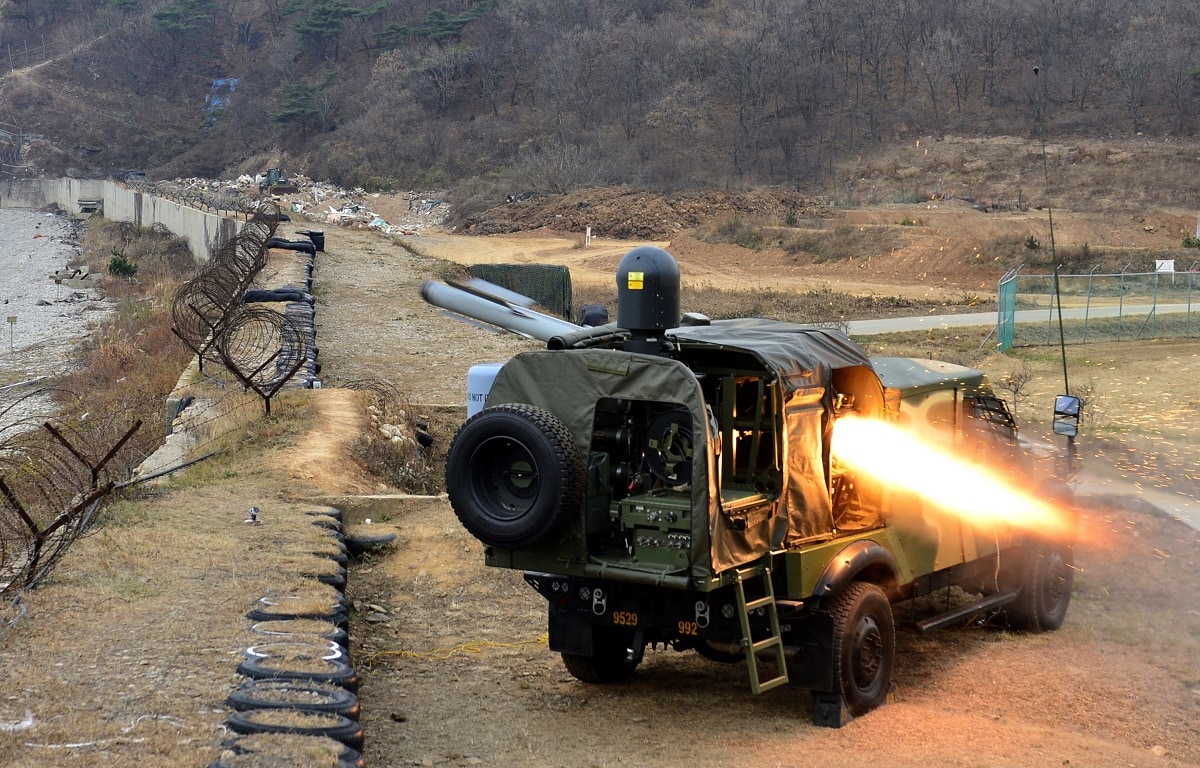A Ukrainian report alleges that Iran has replicated Israel’s Spike anti-tank missile and installed it on a drone, according to The Jerusalem Post. The report asserts that Iran’s Mohajer-6 drone was “equipped with anti-tank missiles and guided aerial bombs,” including the Jewish state’s fire-and-forget anti-tank guided surface-to-surface missile.
While this report has not been confirmed, Tehran has been working tirelessly to advance and expand its arsenal of unmanned aerial vehicles (UAVs). Since the regime is strapped for cash and friends due to international sanctions and its escalatory behavior, upgrading its drones to sell to the Kremlin has become a priority. Russia’s ongoing invasion of Ukraine has evolved into a predominantly drone-driven conflict, upon which Iran has tried to monopolize. Therefore, enhancing its Mohajer-6 drone to become a more sophisticated armed weapon would make sense.
Replicated Weapons Sightings
According to the Jerusalem Post, the Ukrainian report said that “It is currently unknown whether the Russian Federation will buy these UAVs; however, the other day, high-quality photos of weapons under the wings of this and other UAVs ‘lit up’ on the Internet, which gives reason to talk about them,” adding that recent imagery released during an Iranian drone exhibition showcased an “Almas anti-tank guided missile under the wing of an Mohajer-6 drone. The Iranian ATGM with this guided missile was introduced in July 2021. In fact, Almas is a copy of the Israeli Spike, the missile received a hi-tech homing head and a warhead, the declared range of this missile is up to 8,000 meters.”
Nothing Beats the Original
Israel’s Spike anti-tank guided missile has been highly touted as one of the best of its kind by military and industry experts across the globe. Originally developed in the 1980s, the Spike has undergone a series of modifications over time and remains one of Israel’s most successful exports. The Spike is equipped with a small fiber-optic cable that links the missile to the launching system, which helps prevent massed-armor pushes from artillery distances with precision attacks. In June, the Israeli-based Rafael Advanced Defense Systems debuted the sixth-generation variant of the Spike during the Eurosatory defense expo in Paris. The missile’s enhanced attributes include its ability to fire four missiles from a singular launcher at the same time. The recently unveiled Spike NLOS (non-line of sight) variant joined the missile’s four-member family.
The Spike missile’s reputation as the ultimate tank-killer is probably intriguing to Russian Forces, who are more or less stagnant in their offensive objectives in Ukraine. Understanding this, Iran’s alleged attempt at securing a Spike-like missile to its Mohajer-6 drone is possible.
Alongside the Shahed-129 and Shahed-191, the Mohajer-6 represents Iran’s top-of-the-line military drones. In July, the White House revealed photographic evidence depicting a Russian Federation visiting Iran’s Kashan airfield twice. While only the Shahed-129 and Shahed-191 can be viewed, various news outlets have verified that the Mohajer-6 was included in Iran’s first shipment of drones to Russia.

Spike Missile in ROK Military. Image: ROK Military.
While securing its strengthening relationship to the Kremlin remains vital for the regime, producing a powerhouse armed drone for export is no doubt of interest to Iran. Turkey’s Bayraktar drone has played an outsized role in the Russia-Ukraine conflict. This Turkish-made lethal drone has enabled Ukraine to deliver close air support and fire in depth against its Russian invaders. The Bayraktar drone has perhaps become the most recognizable UAV in the war, lending to its export potential. Iran could be trying to integrate a Spike missile copy with its Mohajer-6 drone to produce the same effect.
Whether or not the Ukrainian report alleging that Iran has copied an Israeli anti-tank missile is true, the recent expansion and ongoing developments of Iran’s drone program is a fact. Furthermore, Iran’s UAV-dependence will likely continue to play a role in the ongoing Russia-Ukraine conflict.
Maya Carlin is a Middle East Defense Editor with 19FortyFive. She is also an analyst with the Center for Security Policy and a former Anna Sobol Levy Fellow at IDC Herzliya in Israel. She has by-lines in many publications, including The National Interest, Jerusalem Post, and Times of Israel.

